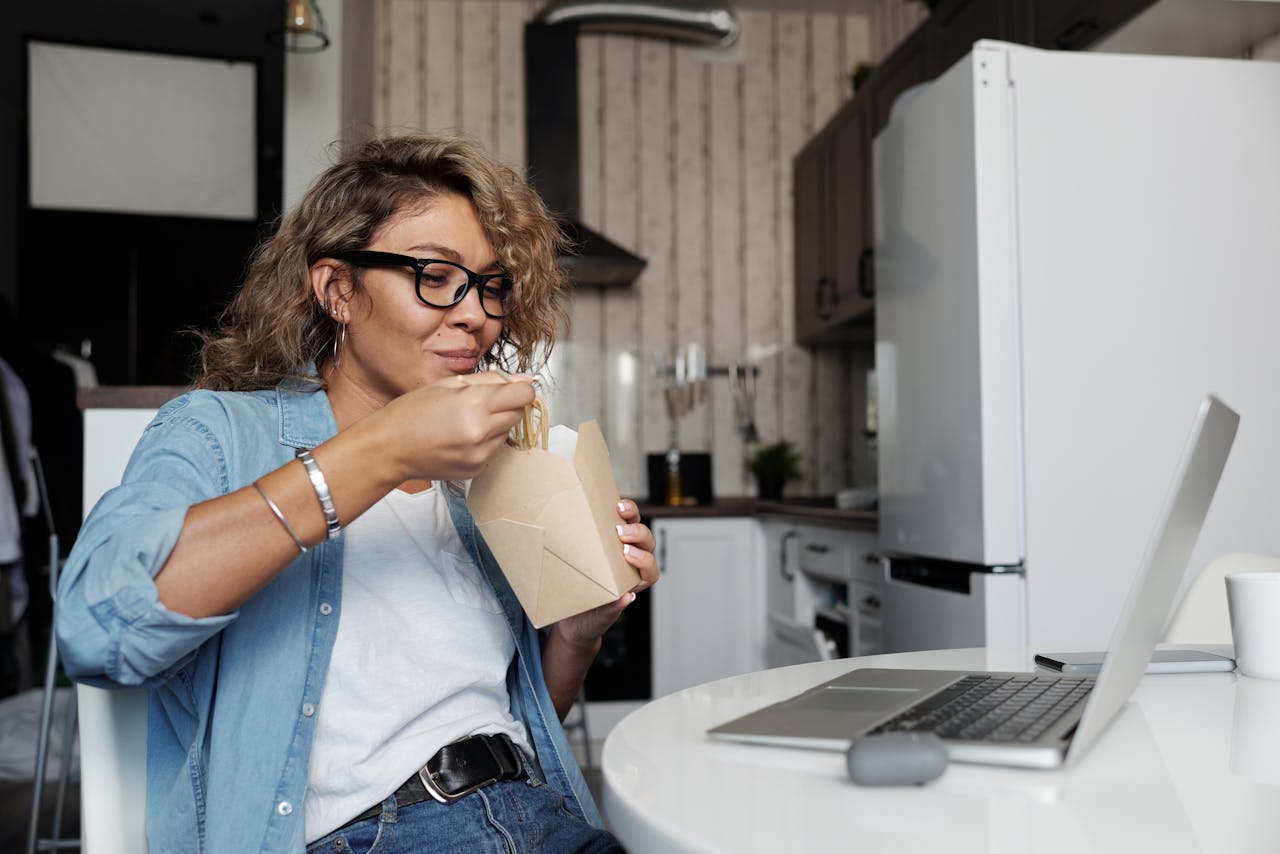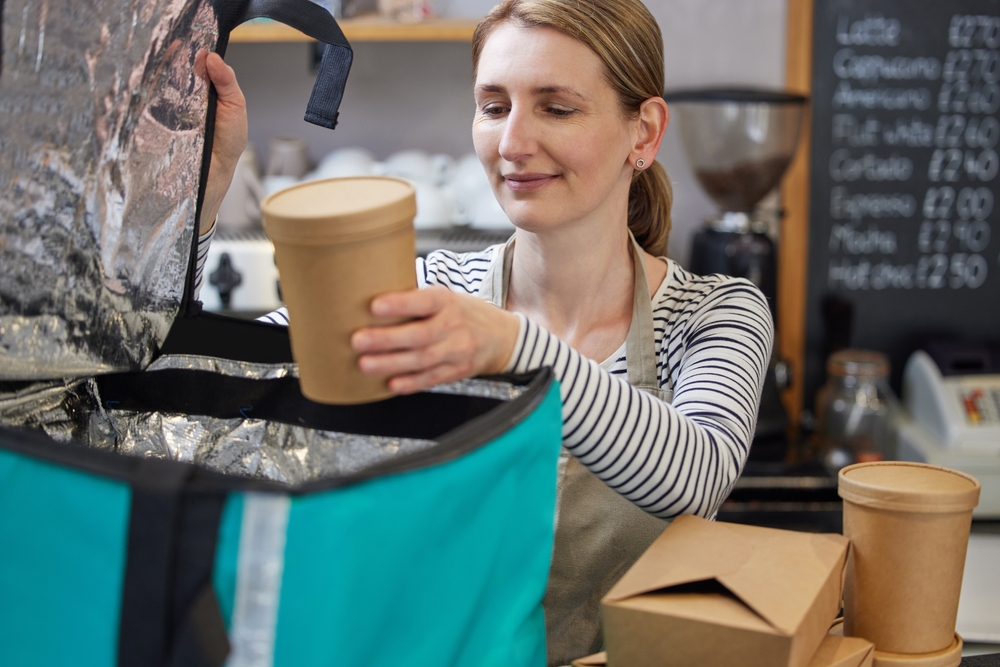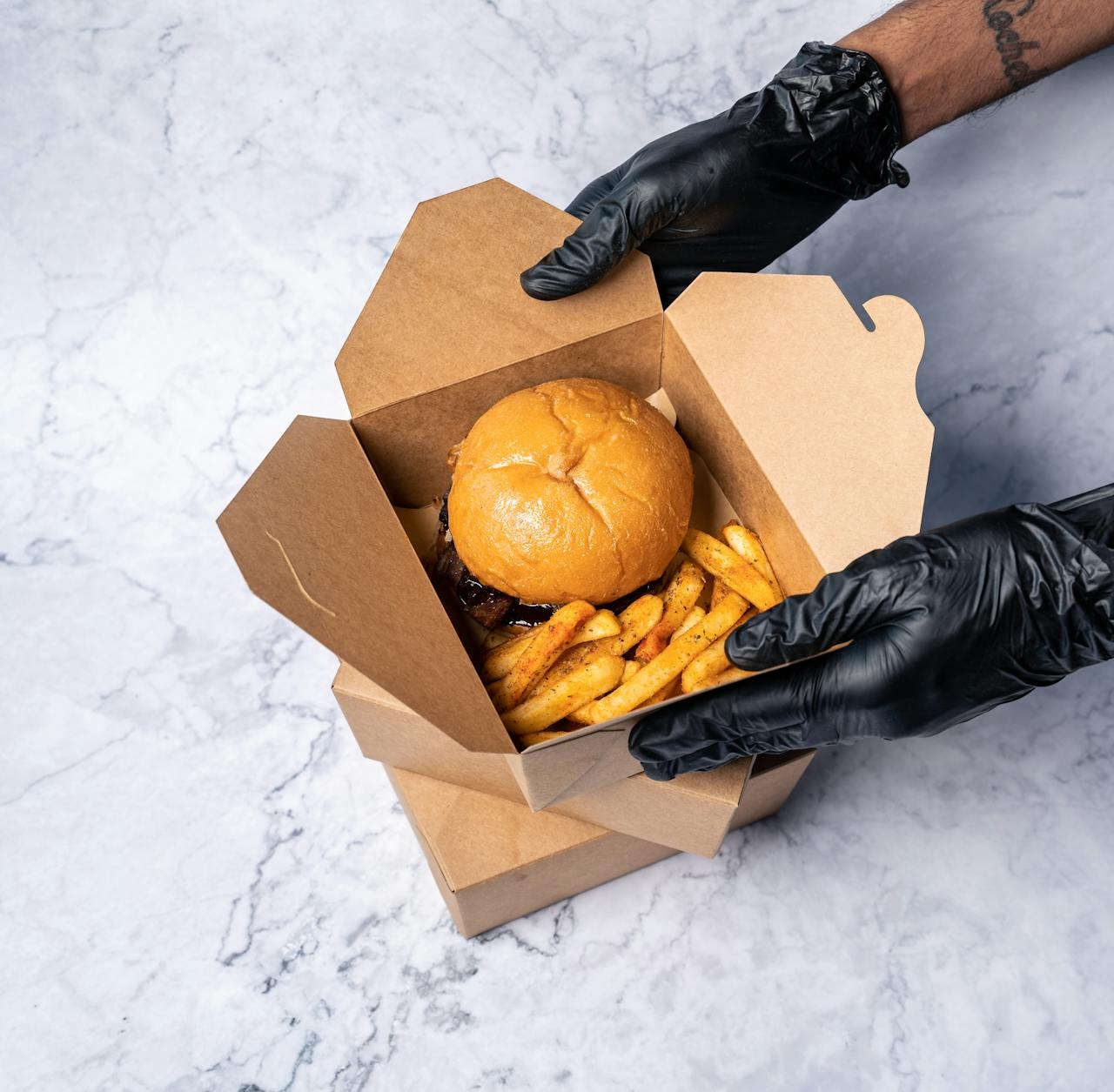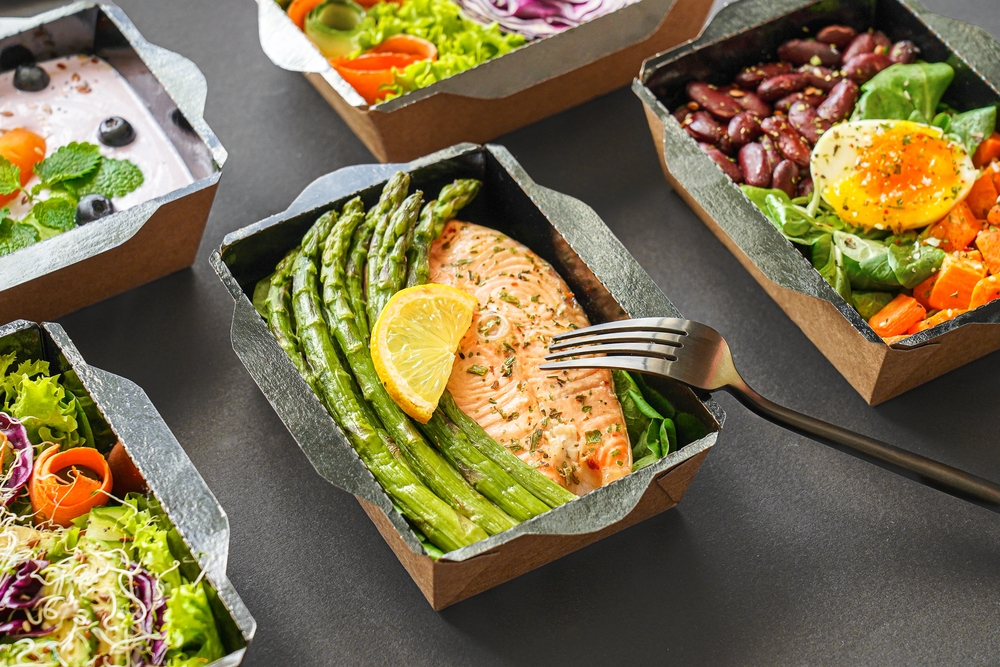Discover What Makes a Good Takeaway Packaging
By Morten Numrich · 24. May 2024
Choosing the right takeaway packaging is a dance of strength, heat retention, and ecological sensitivity.
What makes a good takeaway packaging, then, involves more than mere boxes and bags.
This article addresses exactly that, guiding you through the essential traits of packaging that secures food quality and upholds sustainability—promising thorough insights without revealing all just yet.
Essential Qualities of Top-Notch Takeaway Packaging
 Woman in Blue Shirt Eating Takeaway Pasta
Woman in Blue Shirt Eating Takeaway Pasta
Think of takeaway packaging as a protective armour for your meal. It needs to be:
- Robust, ready to withstand the journey from the restaurant to your table
- Durable, to ensure your food stays intact
- Insulated, to keep your food hot or cold
- Moisture resistant, to prevent any leaks or spills
Durability to Protect Food
Imagine ordering a steaming hot pizza, only to have it arrive in a soggy, broken box. Not an appetising sight, right?
🍕 Takeaway packaging must be durable. It’s the sturdy shield that protects your favourite meals from transportation tantrums.
Insulation for Hot Eats
There’s something incredibly comforting about hot food, especially when it stays hot! 🔥
Insulation comes into play here, functioning like a warm blanket that keeps your hot or cold food at the perfect temperature.
Specialised insulated packaging, like aluminium for burritos and sandwiches or polypropylene (PP) plastic containers, lock in the heat, ensuring your meal doesn’t turn into a cold disappointment.
Moisture Resistance for Cool Treats
While we love our hot meals, let’s not forget the thrill of sipping a refreshingly cool drink or biting into a chilled dessert, which are perfect examples of cold food.
🥤 Moisture-resistant packaging is the knight in shining armour for these hot and cold food and drinks, preserving their freshness and coolness.
Balancing Sustainability with Functionality in Takeaway Food Containers
 Female Restaurant Worker Using Sustainable Takeaway Packaging
Female Restaurant Worker Using Sustainable Takeaway Packaging
Alongside the crucial factors of durability, insulation, and moisture resistance, sustainability is gaining increasing significance in our current era.
🌍 As we balance environmental concerns with functionality, we find ourselves exploring eco-friendly materials and biodegradable solutions. But can we really have the best of both worlds? Spoiler alert: Yes, we can!
Choosing Eco-Friendly Materials
In our quest for eco-friendly packaging, we’ve unearthed some real gems.
🌱 Plant-based containers, made from materials like sugarcane pulp, not only tick the biodegradable box but also handle a variety of temperatures, making them a truly versatile packaging material and a great example of sustainable packaging.
Recycled paper and cardboard, on the other hand, are cost-effective and compostable, while bagasse, produced carbon-neutral from sugarcane, is a renewable material that’s eco-friendly and efficient.
Biodegradable and Compostable Solutions
While eco-friendly materials are a step in the right direction, we can go a step further with biodegradable and compostable solutions.
🌾 These alternatives to traditional plastic packaging decompose and enrich the soil, reducing our environmental footprint. From recycled paperboard to mushroom mycelium, bagasse food containers are changing the game in the takeaway packaging industry with their compostable properties, offering an eco-friendly alternative to plastic takeaway containers.
Customizing Packaging to Enhance Brand Identity
 Sustainable Food Packaging
Sustainable Food Packaging
More than just a protective layer for food, packaging also serves as a platform for brands to display their unique identity.
Branded packaging can boost brand recognition and provide free advertising – talk about a win-win situation! 🎨
Designing with Your Brand in Mind
Have you ever observed your ability to identify a McDonald’s cup or a Starbucks coffee sleeve even from afar? That exemplifies the impact of effective branding.
🏪 Consistent colours, logos, and typography make your brand instantly recognizable. With clear images and legible fonts, you can build trust and brand loyalty.
Prioritising Health and Safety
Though branding is essential, it must never compromise health and safety.
🛡️ Using high-quality, food-grade packaging materials ensures the safety of your customers.
After all, no one wants to deal with health risks from chemicals seeping into food from low-quality packaging materials.
Innovative Alternatives to Traditional Plastic Food Packaging
 ready healthy food packaging
ready healthy food packaging
As we persistently question the standards of takeaway packaging, we encounter groundbreaking alternatives that are revolutionising the industry.
From plant-based and renewable options to the shift away from oil-based plastics, these game-changers are redefining the landscape of sustainable takeaway packaging. 🌿
Plant-Based and Renewable Options
Who would’ve thought that mushrooms or avocado seeds could be used for takeaway packaging?
🍄🥑 These plant-based containers, derived from rapidly renewable resources, are not only eco-friendly but also suitable for different temperature requirements.
And then there’s seaweed-based packaging that’s compostable and has natural antimicrobial properties. Talk about innovation!
The Shift Away from Oil-Based Plastics
The shift away from oil-based plastics is more than just a trend; it’s a necessity. 🚫 Biodegradable coffee cups made from recycled paper lined with PLA are an example of this shift.
They offer a sustainable alternative for hot beverage insulation, reducing environmental impact and our ecological footprint.
Engaging Customers with Sustainable Practices
Involving customers in sustainable practices transcends business benefits, it aids in cultivating a culture of collective responsibility.
🌱 Whether it’s through rewards for reusability or educating on proper disposal, these practices are a testament to a brand’s commitment to sustainability.
Rewards for Reusability
Ever thought about rewarding your customers for bringing their own reusable containers? 🎁
Offering incentives like a small discount or implementing a loyalty program can foster a culture of sustainability. After all, nothing encourages customers more than a good deal!
Educating on Proper Disposal
Sustainable practices go beyond providing eco-friendly options; it’s about educating customers on responsible disposal.
📚 By integrating education into the customer experience, businesses can amplify their eco-conscious message, reinforcing their commitment to reducing environmental impact.
Tailoring Packaging to Diverse Food Offerings
Much like we wouldn’t sport a summer dress to a winter gathering, we shouldn’t resort to the same packaging for all food types.
👗 Tailoring packaging to diverse food offerings is about understanding the unique needs of each food item and choosing the right container.
After all, a juicy burger and a delicate pastry have very different packaging needs! 🍔🥐
For Hot and Hearty Meals
For those piping hot dishes that warm your soul, insulated clamshells are the perfect companion.
They keep your meal warm, ensuring that even if you’re eating at home, you get the restaurant experience of a steamy, hearty meal. 🥘
For Fresh Juices and Chilled Beverages
When it comes to cold or chilled beverages, cool and refreshing is the name of the game. ❄️
Insulated paper cups and clear bioplastic cups not only maintain the cool temperature but also show off the vibrant colours of your drinks.
Add a leak-resistant lid, and you’ve got the perfect packaging for a refreshing experience.
Optimising Costs Without Compromising Quality
Though quality reigns supreme, it’s vital to monitor costs. But how do you optimise costs without compromising on quality?
💰 The answer lies in economical material selection and efficient supply chain management.
Economical Material Selection
Choosing the right material for your food packaging materials can make a significant difference in your costs.
From recyclable metals and plastics to biodegradable cellulose and wood derivatives, each material offers unique benefits.
The trick is to balance strength and cost, ensuring you get the best bang for your buck. 📦
Bulk Purchasing and Supply Chain Efficiency
Bulk purchasing is like buying in bulk at the grocery store – the more you buy, the less it costs per unit. This principle applies to packaging materials as well.
Moreover, optimising your supply chain, from automated packaging systems to continuous monitoring, can lead to significant cost savings and increased efficiency.
Summary
We’ve journeyed through the world of takeaway packaging, exploring its many facets.
From essential qualities like durability and insulation to innovative alternatives and sustainability, it’s clear that takeaway packaging is a vital aspect of the food service industry.
As we strive for eco-conscious choices and customer engagement, remember that every small step towards sustainability makes a big difference.
So, let’s continue to innovate, inspire, and influence the world of takeaway packaging, one meal at a time! 🍽️🌍
Frequently Asked Questions
What are the essential qualities of good takeaway packaging?
Good takeaway packaging should prioritise durability, insulation, and moisture resistance for a top-notch experience. Cheers! 🥂
How can I balance sustainability with functionality in takeaway packaging?
Choose eco-friendly and biodegradable materials for your takeaway packaging to achieve a balance between sustainability and functionality. ♻️
Why is branding important in takeaway packaging?
Branding on takeaway packaging is crucial because it increases brand recognition and provides free advertising, ultimately boosting brand identity. So, don’t underestimate the power of a well-branded package! 🎨
What are some innovative alternatives to traditional plastic food packaging?
Ditch traditional plastic and opt for plant-based containers, recyclable metals, or biodegradable cellulose for more eco-friendly food packaging! 🌿
How can I engage customers in sustainable practices?
Offer rewards for reusability and educate on proper disposal to engage customers in sustainable practices. Encouraging responsible behaviour benefits both the environment and the customer experience. 🌍

